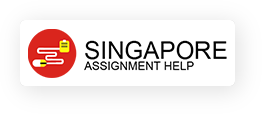| Subject | MGMT3006: Business Ethics |
Case Study for Further Assessment:
In May 2020 news emerged that multinational mining company Rio Tinto had blown up and destroyed a 46,000-year-old site known as Juukan Gorge. Cultural artefacts found at the site were among some of the oldest in Western Australia, making it incredibly significant not only for the Traditional Owners, the Puutu Kunti Kurrama and Pinikura people but also for the history of the continent of Australia.
The cultural artifacts in the shelters were 46,000 years old. These sites had deep historical and cultural significance. The shelters are the only inland site in Australia showing human occupation continuing through the last Ice Age.
The mining blast caused significant distress to the Puutu Kunti Kurrama traditional landowners. It’s an irretrievable loss for future generations.
But the destruction of this site is not an isolated incident. Moreover, Rio Tinto was acting within the law.
In 2013, Rio Tinto was given ministerial consent to damage the Juukan Gorge caves. One year later, an archaeological dig unearthed incredible artifacts, such as a 4,000-year-old plait of human hair, and evidence that the site was much older than originally thought.
But state laws let Rio Tinto destroy the sites nevertheless.
The history of large developments legally destroying Indigenous heritage sites in Australia is long and ongoing.
Currently, ancient rock art on the Burrup Peninsula in north-western Australia is under increasing threat from a gas project. The site contains more than one million rock carvings (petroglyphs) across 36,857 hectares. But a Senate inquiry revealed emissions from the adjacent industrial activity may significantly damage it.
The West Australian government is seeking world heritage listing to try to increase protection, as the regulatory frameworks at the national and state level aren’t strong enough to do so.
For the rock shelters in the Western Pilbara, Rio Tinto was abiding by Western Australia’s Aboriginal Heritage Act 1972 – which is now nearly 50 years old.
Section 17 of that act makes it an offense to excavate, destroy, damage, conceal, or in any way alter any Aboriginal site without the ministerial consent.
But, Section 18 allows an owner of the land – including the holder of a mining license – to apply to
the Aboriginal Cultural Material Committee for consent to proceed with a development action regardless. The committee then evaluates the importance and significance of the site and makes a recommendation to the minister. In this case, the minister allowed Rio Tinto to proceed with the destruction of the site.
The biggest concern with this act is there’s no requirement that traditional owners be consulted. This means traditional owners are left out of vital decisions regarding the management and protection of their cultural heritage. And it confers authority upon a committee that, in the words of a discussion paper, “lacks cultural authority”.
After the destruction of the Juukan Gorge sites, Rio Tinto initially declined to apologize for the actions. The company’s Chief Executive of Iron Ore, Chris Salisbury, said repeatedly that the company apologized only “for the distress the event caused” while noting that the company had followed the legal processes required.
Later, after a public backlash in the media, from the wider community, and traditional owners as well as unhappiness from Rio Tinto’s own employees, a leaked recording emerged of Salisbury speaking to employees at a company meeting. He told them the company had followed the right legal processes to destroy the caves and for this reason, the company had only apologized for the distressed caused, not the destruction itself.
There was a further backlash after that recording was leaked. Salisbury then issued an “unreserved” apology for the destruction.
The events come against a background of similar events and public concerns.
In December 2018 Salisbury himself noted that the public lacked trust in mining companies, including his own.
At the time he said the mining industry has a trust problem with the Australian public and was putting a heavy emphasis on shoring up its social license to operate. The 30-year industry veteran said Rio Tinto, along with other miners, needed to change and adapt to ensure its future was as strong as its past.
Stuck with a lot of homework assignments and feeling stressed ? Take professional academic assistance & Get 100% Plagiarism free papers
“In an industry that is built on the goodwill and trust of governments and communities, we need to positively engage with our neighbors and the broader community to tell our story better,” he said.
Those comments in 2018 came days after an EY survey of 250 mining executives found more than half now considered license to operate the biggest risk to their businesses amid rising nationalism, changing community perceptions of mining operations, and the impact of automation on the workforce.
Meanwhile, the destruction of more sites is being planned. Within days of Rio Tinto’s Juukan blast, WA’s heritage minister Ben Wyatt approved a BHP application to destroy dozens of heritage sites. In both cases, Rio and BHP had long-standing comprehensive mining agreements involving multimillion-dollar royalties and other economic benefits with traditional owners that effectively gave a green light to mining.
WA-based projects with approvals pending under section 18 include Fortescue Metals Group’s
$US287m Queens mine, and its $US2.6 billion Iron Bridge magnetite joint venture. Heritage sites at Australian Potash’s $208 million project near Laverton and at least one gold mining project are also awaiting Section 18 approvals.
On the other hand, BHP last week agreed to pause plans for the destruction of many heritage sites at its
$US3.6 billion South Flank iron ore mine development despite having been granted approval by the minister, Ben Wyatt.
Questions in response to the case study:
Your report should answer the following questions in response to the case study on pages 3-4 below:
Q1. What would each of the normative theories say to be the biggest ethical failings (that is, the biggest ethical wrongdoings) in this case and why?
Your answer should demonstrate an understanding of these three normative theories and their application to business practices as discussed in this unit.
Q2. Other than (i.e. not including) CSR, Carroll’s pyramid, and the broad and narrow views, which 3 ideas and topics from the unit are most relevant to this case, and how do they apply?
Your answer should demonstrate an understanding of the key concepts and topics from the unit and their application to business practices as discussed in this unit.
Q3. According to the salience model (pictured in Figure 1 below), which if any of the stakeholders have the following characteristics and why do you think that?
- Power but not legitimacy or urgency (i.e. dormant stakeholders).
- Legitimacy and urgency but not power (i.e. dependent stakeholders).
- Legitimacy, power, and urgency (i.e. definitive stakeholders).
Your answer should demonstrate an understanding of this model, the key topics and theories, and their application to business practices as discussed in this unit.
If you are struggling to make an (MGMT3006) business ethics report let allow our experts to showcase their skills and help to gain you the highest academic grades at University. Also, Get business management assignment help from the expert homework helper of Singapore Assignment Help at a very low price.
Looking for Plagiarism free Answers for your college/ university Assignments.
- LB5229 Economics for a Sustainable World Business Study Report Assignment : A Strategic Economic and Sustainability Analysis of Singapore Exchange Limited (SGX)
- WRIT6000 Professional Writing Assignment 1: A Rhetorical Analysis of Persuasive Strategies in Professional
- Exploring the Intersection of Law and Ethical Reasoning in Nursing Practice Assignment : An Ethical Dilemma Case Study
- Leadership Towards Mastery of Leading Self & Global Culture Assignment : Effective Leadership Strategies & Organizational Culture in a VUCA-Driven Global Environment
- RBP020L061S Strategic Marketing Assignment: Designing a Marketing Strategy and Implementation Plan for a New or Improved Product/Service
- PSS221 Urban Security and Resilience Assignment : Enhancing Personal Security and Urban Resilience in Growing Metropolises
- EGE202 Application Programming Project 2 Assignment : Advanced Drawing and Image Editing Tool Using C# Windows Forms
- MGMT3001 International Management Assignment 2 Report : Cross-Cultural Negotiation Strategy Between a Singaporean Aircraft Manufacturer and a U.S. AI Technology Firm
- LB5203 Sustainable Enterprise Assignment : Detailed Breakdown of Quizzes, Reports, and Project Tasks
- A2469C Principles of Histotechnology and Cytotechnology Assignment: Special Stain Report and Cytological Processing Case Study Comparison

